Hard Wood Strips: Properties, Uses, and Sustainability
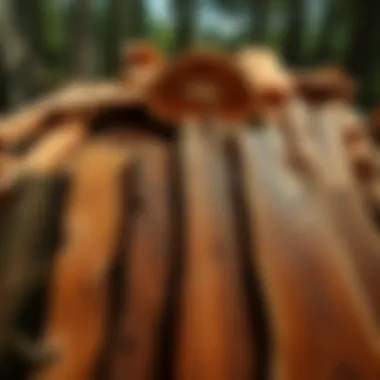
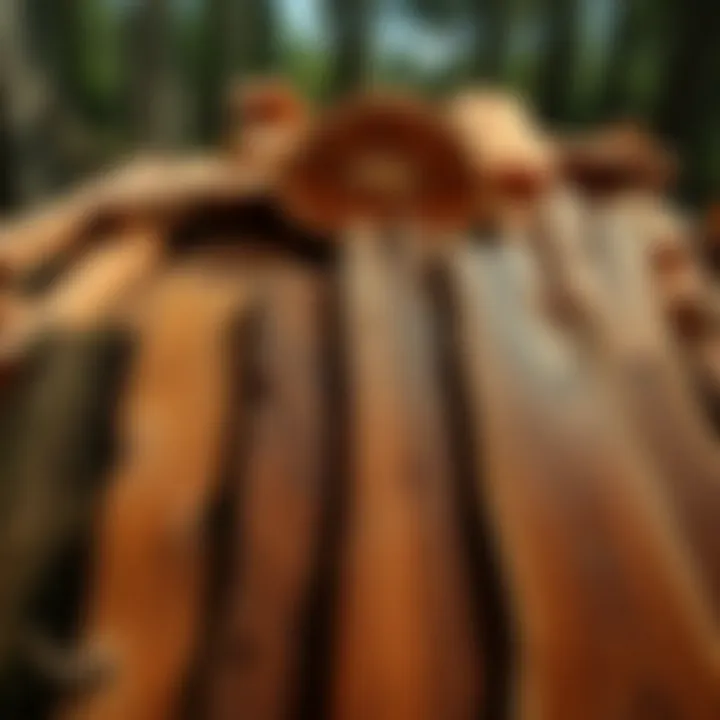
Intro
In today’s world, where sustainability and conservation are more than just buzzwords, the role of hardwood strips in various applications becomes a central topic of discussion. These strips serve not only as essential materials in construction and woodworking but also as a testament to responsible forest management practices. Whether you’re a carpenter crafting fine furniture or a builder erecting structures, understanding hardwood strips and their properties opens the door to both innovation and a deeper respect for our natural resources.
The versatility of hardwood strips lies in their unique properties. Each species of hardwood possesses its own characteristics, from density and grain patterns to color and durability. By focusing on ecological considerations, we can better appreciate how these materials contribute to both functional designs and aesthetic values while still considering the health of our forests.
This exploration will guide you through the essential aspects of hardwood strips, highlighting their properties, varied uses, and the crucial importance of sustainable practices in forestry. With insights for professionals and enthusiasts alike, this article seeks to balance knowledge and practice, weaving together a narrative that respects our natural surroundings.
Prolusion to Hard Wood Strips
Hard wood strips play a critical role in various industries, notably in construction and woodworking. The strength and aesthetic appeal of these materials make them a popular choice for a wide range of applications. Understanding hard wood strips is more than just grasping the physical properties; it's about appreciating the ecological and cultural significance they hold in our lives. Each piece of hard wood carries a story of growth, resilience, and symbiosis with the environment. In this article, we'll delve into the captivating world of hard wood strips, exploring their properties, uses, and sustainable practices.
Definition and Characteristics of Hard Woods
Hardwood refers to timber obtained from angiosperm trees, which generally have broader leaves and produce seeds with a covering. Unlike softwoods, which come from coniferous trees, hard woods tend to be denser, which contributes to their renowned strength and durability. A few defining characteristics include:
- Density: Hardwoods typically exhibit higher density and weight compared to softwoods. This means they can bear significant loads, making them suitable for structural applications.
- Durability: Most hardwoods are resistant to wear and tear, making them ideal for flooring and heavy-use furniture.
- Aesthetic Appeal: Hardwoods often showcase intricate grains and colors, offering a natural beauty that is hard to replicate with artificial materials.
Understanding these characteristics is vital for anyone involved in construction, furniture making, or ecological stewardship. It helps not only in choosing the right materials but also in recognizing their potential impact on the environment.
Common Species Used in Hard Wood Strips
When it comes to hard wood strips, various species are favored due to their unique qualities. Some commonly used hard wood species include:
- Oak: Renowned for its strength and durability, oak is often utilized in flooring and furniture.
- Maple: With a fine, uniform texture, maple offers a bright appearance which works well for cabinets and countertops.
- Cherry: The rich, warm tones of cherry make it a favorite for high-end furniture and cabinetry.
- Walnut: Known for its deep color and grain patterns, walnut adds a touch of luxury to any design.
These species have their own specific benefits and drawbacks. For example, while cherry wood ages beautifully, its softness could be a drawback in high-traffic areas. It’s important for professionals to weigh these factors carefully when selecting the right type of hard wood for their needs.
"The choice of material can make or break a project. Knowing the nuances of hard wood species provides a strong foundation for quality craftsmanship."
By properly understanding hard woods and their characteristics, alongside knowledge of various species, professionals can make informed decisions that will ensure their projects not only meet quality standards but also contribute to sustainable practices.
Properties of Hard Wood Strips
The properties of hard wood strips are fundamental to understanding their applications and advantages in various fields. Because they serve pivotal roles in construction and manufacturing, recognizing specific traits such as density, strength, durability, and aesthetic appeal can assist in making informed choices when selecting materials. This section will delve deep into the essential characteristics that define hard wood strips, focusing on metrics that matter to both professionals and eco-conscious users.
Density and Strength Metrics
The density of hardwood varies significantly between species, often impacting its strength and suitability for particular uses. Generally, denser woods are stronger and more durable but can be more challenging to work with and may require specialized tools. For instance, oak, a commonly used hardwood, is prized not only for its rich color and grain but also for its considerable density, making it excellent for flooring and cabinetry.
Understanding the tensile and compressive strength metrics is vital too. Tensile strength refers to how much pulling or stretching force a material can withstand before breaking. For example, walnut has a high tensile strength, making it a popular choice for furniture that requires stability and support. On the other hand, softer hardwoods like poplar, despite their lower density, can still serve well in applications that won't demand as much strength.
"Choosing the right hardwood means balancing aesthetics with practicality and function."
Durability and Stability Under Various Conditions
Durability encompasses the wood's resistance to decay, moisture, insects, and even physical impact. Hardwoods like teak and mahogany boast high natural oil content, which helps them endure outdoor exposure without hefty deterioration. This trait makes them valuable for outdoor furniture or marine applications. Conversely, certain hardwoods might require treatment or sealing to protect against moisture and pest issues, particularly if applied in humid climates.
Stability also plays a crucial role; it refers to how much a wood can expand and contract with fluctuations in humidity and temperature. For instance, some hardwoods, such as maple, maintain their shape very well, reducing the likelihood of warping. Choosing hardwood strips known for stability can be vital in environments that experience significant humidity swings, ensuring that the finished product stands the test of time.
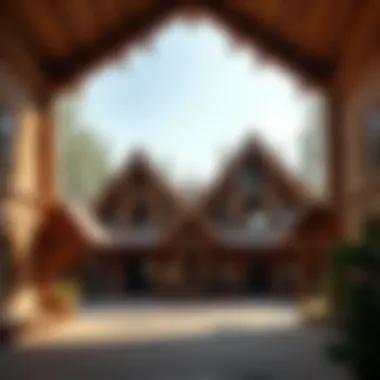
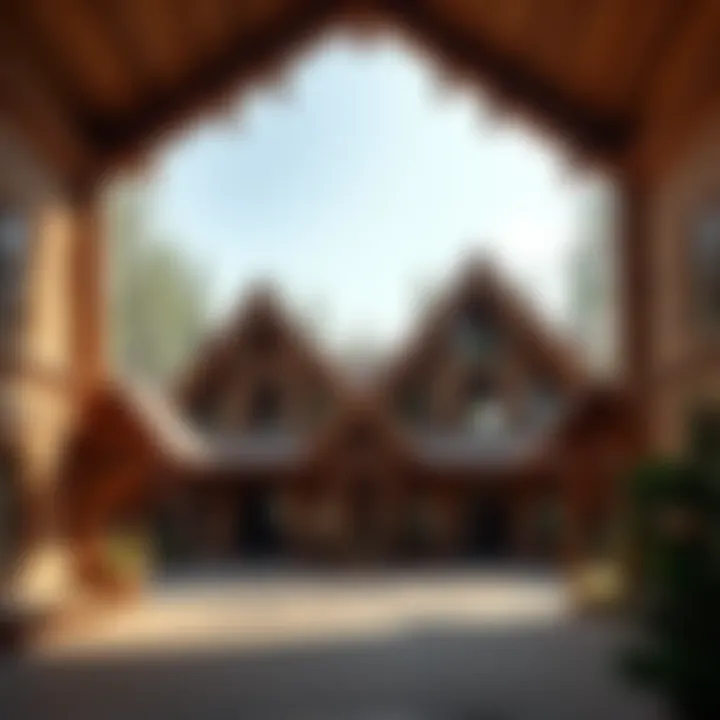
Aesthetic Qualities and Finishing Options
When it comes to aesthetic qualities, hardwood strips offer a vast palette of visual characteristics—from the warm hues of cherry to the intricate grain patterns of ash. These elements enable designers and craftsmen to create pieces that are not just functional but visually striking as well.
Finishing options further enhance the appearance and durability of hardwood strips. Professionals often choose between oil-based or water-based finishes depending on the desired look and application. An oil finish accentuates the wood grain and provides a warm sheen, while water-based options dry faster and present a more subtle effect.
In addition to traditional stains and varnishes, newer eco-friendly finishes are making strides, catering to the demand for sustainable practices without sacrificing quality. Opting for finishes that highlight the natural beauty of the wood while ensuring longevity can set a project apart, marrying function with form beautifully.
Applications of Hard Wood Strips
Hard wood strips are increasingly making their mark across various industries, from construction to artistic endeavors. Their versatility not only makes them a preferred material for many applications but also sets a stage for innovation and sustainable practices. This section delves into the relevance of hard wood strips in multiple contexts, emphasizing how their unique properties can be harnessed effectively.
Construction and Structural Uses
In the realm of construction, hard wood strips are known for their strength and resilience. Builders appreciate these strips for their capacity to handle heavy loads while maintaining structural integrity over time. Specific species like oak and maple are often used due to their density, which contributes to stability in various applications.
These woods are commonly employed in flooring, beams, and even cabinetry. A notable advantage is their natural aesthetic, merging functionality with beauty. When it comes to flooring, for instance, hard wood strips provide a warm, inviting ambience that's hard to replicate with other materials. Builders often prefer hard wood strips over softwoods, as the former withstands impacts better, reducing the need for frequent repairs. In fact, a properly maintained hard wood structure can outlast its softwood counterparts by decades.
Utilization in Furniture Making
For furniture makers, hard wood strips are a dream come true. The richness in texture and grain patterns from species like cherry and walnut can significantly enhance a piece's aesthetic appeal. Artisans often utilize these strips for crafting everything from dining tables to intricate cabinetry. The durability of hard wood makes it suitable for high-traffic areas, ensuring that furniture remains functional and visually appealing for a long time.
Crafting furniture with hard wood strips allows artisans to showcase their craftsmanship. The natural beauty of the wood can be highlighted through various finishing techniques such as staining or oiling, resulting in pieces that not only serve a purpose but also act as statement items. Attention to detail, coupled with the quality of materials, can often lead to a more favorable reception in the market, meaning artisans who understand how to work with hard wood can potentially see better returns on their investments.
Artistic and Decorative Uses
Hard wood strips aren't just limited to construction and furniture; they also find their way into the hands of artists and craftspeople. Whether for fine art sculptures, customized woodturnings, or unique decorative wall panels, the potential of hard wood strips is vast. An artist might choose strips of mahogany for a project due to its rich red hue, which could contrast beautifully with lighter woods in a mixed media composition.
Additionally, hard wood strips can be utilized in home décor, with unique wall art pieces or bespoke furniture accents. When crafted thoughtfully, these pieces can transform ordinary spaces into extraordinary ones, showcasing the natural beauty of wood. From sleek modern designs to rustic charm, the possibilities are nearly endless.
"The grain of hard woods, when properly finished, tells stories that resonate with the natural world, captivating those who encounter the piece."
Hard wood strips, therefore, are not merely practical; they are a canvas for expression. Their diverse applications highlight how important they are in various fields, allowing individuals to embrace both functionality and creativity.
Sustainable Sourcing of Hard Wood
The significance of sustainable sourcing for hard wood cannot be understated in today’s environmental landscape. With an increasing awareness of the ecological footprint left by industries across the globe, it is crucial to prioritize practices that contribute to the longevity of our forests and the health of our planet. Sourcing hard wood sustainably means ensuring that trees are harvested in a manner that preserves the overall ecosystem, allows for regrowth, and maintains the balance of species within forested areas.
Ethical Harvesting Practices
Ethical harvesting practices refer to methods that prioritize environmental responsibility and social equity when it comes to gathering hard wood. These practices serve as a counterbalance to the pressures of over-exploitation and deforestation, which pose serious threats to biodiversity.
For instance, selective logging techniques allow for some trees to be removed while protecting a majority, minimizing the impact on the surrounding flora and fauna. Additionally, this method facilitates the natural regeneration of the forest.
Another aspect of ethical harvesting is ensuring that local communities benefit from forest resources. When communities are involved in the management of their local forests, they are more likely to engage in sustainable practices. Fair compensation and respect for indigenous rights help foster relationships that balance economic needs with ecological preservation.
"By adopting ethical harvesting practices, we do not just give nature a fighting chance; we also ensure that future generations can enjoy the beauty and resources our forests provide."
Also, monitoring systems are vital in nicely tracking the impact of logging activities. Regular assessments can help determine whether harvesting methods are sustainable, thus contributing to long-term forest health.
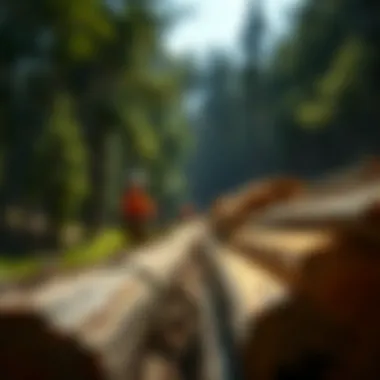
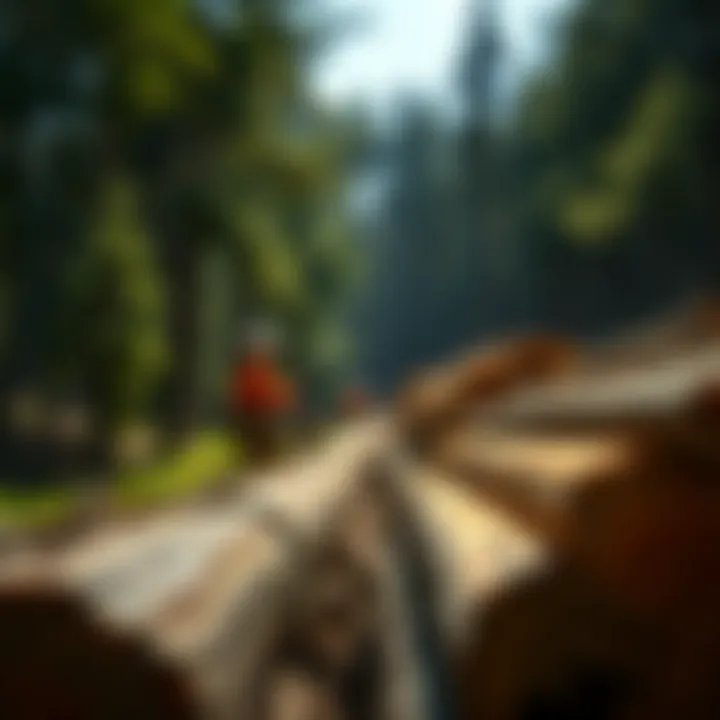
Certifications for Sustainable Wood Products
Sourcing hard wood responsibly often means looking for certifications that indicate adherence to sustainable practices. Certifications like the Forest Stewardship Council (FSC) and the Programme for the Endorsement of Forest Certification (PEFC) are recognized standards that help consumers make informed choices about their wood products.
When a product bears an FSC label, it signifies that it originates from forests that are sustainably managed, socially responsible, and economically viable. Similarly, PEFC supports sustainable forest management through independent third-party certification.
These certifications aren't just about the environmental impact, either; they also promote social benefits, ensuring that forest workers are treated fairly and that local communities have a voice in the management of resources.
- Benefits of these certifications include:
- Assurance of sustainable practices
- Protection of biodiversity
- Support of local economies
- Increased transparency in the supply chain
In summary, the path of ethical harvesting and acquiring certified wood plays an essential role in ensuring that our approach to hard wood sourcing is both sustainable and responsible. It’s about more than just maintaining supply; it’s about fostering a future where our interactions with the environment are harmonious and constructive.
Environmental Impact of Hard Wood Strips
The environmental impact of hard wood strips plays a critical role in sustainable forestry practices. Understanding the benefits and considerations surrounding their use is essential for forestry professionals and others interested in the long-term health of our forests. Hard woods, known for their strength and durability, offer not just practical applications but also significant ecological contributions that can’t be overlooked. This section examines how hard wood strips affect carbon storage and biodiversity within forest ecosystems.
Carbon Sequestration Contributions
One of the primary environmental benefits of hard wood strips lies in their ability to act as carbon sinks. Trees absorb carbon dioxide from the atmosphere during their growth, storing carbon in their trunks, branches, and roots. When these trees are harvested responsibly, the wood can continue to sequester carbon when used in construction or furniture, thus extending the carbon storage cycle.
- Long-Term Storage: Using durable hardwoods for building materials means that carbon remains locked away for decades, or even centuries, as part of constructed structures.
- Lifecycle Benefits: The sustainability of hard wood strips can also be enhanced via recycling and repurposing. When old wood is properly reused, the carbon it holds does not return to the atmosphere, aiding in climate change mitigation.
"Sustainable hardwood management not only provides resources but also plays a critical role in the global fight against climate change."
Biodiversity Considerations in Harvesting
When harvesting hardwood for strips, one must consider the broader implications on biodiversity. Forests are complex ecosystems, home to a myriad of species. If not managed carefully, harvesting practices can disrupt these habitats. Here are some important points to consider:
- Selective Logging: This method allows for the removal of specific trees while leaving the surrounding vegetation and wildlife largely intact. It promotes the natural regeneration of species.
- Maintaining Ecosystem Health: Proper management ensures that various tree species remain part of the forest, supporting different animal and plant species dependent on diverse habitats.
- Avoiding Overharvesting: Striking the right balance between demand for hardwood strips and the forest's ability to regenerate is crucial. Overharvesting can lead to habitat loss, increased competition among remaining species, and eventual decline in biodiversity.
Challenges in Hard Wood Management
The management of hardwood resources faces several significant challenges that can affect their sustainability and availability. Addressing these issues is crucial, not only for the preservation of specific species but also for maintaining biodiversity and the overall health of forest ecosystems. It is imperative to understand how these challenges intersect with the increasing demand for hardwood raw materials from various industries.
Threats from Invasive Species
Invasive species present a formidable challenge within the realm of hardwood management. These non-native organisms can disrupt local ecosystems, outcompeting native flora and fauna for resources. For instance, the arrival of the emerald ash borer, an invasive beetle, has led to widespread ash tree die-offs in North America. The rapid decline of these trees not only endangers the species but also destabilizes local habitats that depend on them.
- Invasive species can lead to:
- Decreased biodiversity, as native species struggle to survive.
- Increased costs for management and control efforts.
- Long-term changes in forest composition, making recovery difficult for affected ecosystems.
To tackle this, forest managers must prioritize early detection and rapid response strategies to mitigate the impacts of such invasives. Collaborating with ecologists and implementing monitoring programs are vital actions that can aid in preserving hardwood populations.
"Prevention is better than cure, especially when combating the insidious spread of invasive species."
Climate Change Effects on Hard Wood Supply
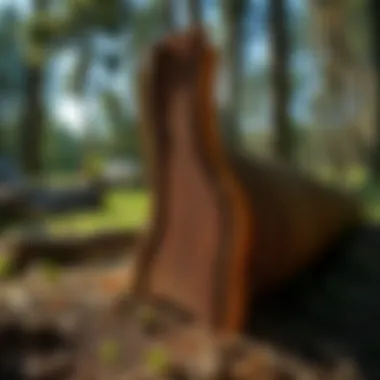
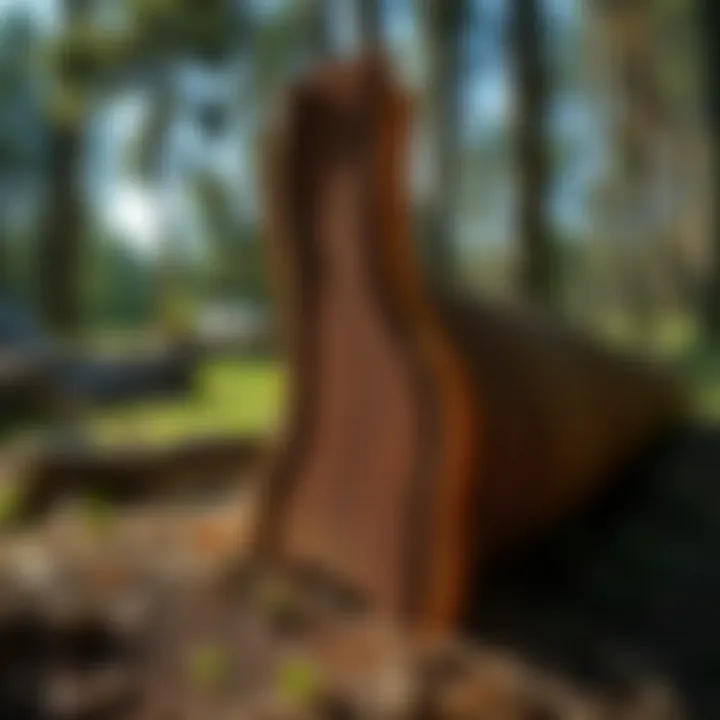
Climate change significantly influences hardwood supply, posing threats that extend far beyond mere temperature changes. As weather patterns shift, so does the distribution of tree species. Warmer temperatures and erratic rainfall patterns can lead to moisture stress in hardwood trees, making them more susceptible to diseases and pests. Moreover, extreme weather events, such as storms or droughts, can cause extensive damage to forests, reducing timber availability.
The following points illustrate some critical effects of climate change on hardwoods:
- Changing growth rates can alter harvesting schedules, impacting wood supply chains.
- Loss of forest cover due to increased wildfires threatens hardwood species long-term.
- Inadequate regeneration may arise from unsuitable growth conditions, leading to diminished populations.
In light of these challenges, effective forest management must incorporate adaptive practices that account for projected climate scenarios. This includes selecting resilient species for regeneration and implementing conservation measures that reduce carbon footprints.
In summary, understanding the myriad challenges relating to hardwood management is not just an academic exercise. It's crucial for ethical stewardship of our natural resources and ensuring that the demand for hardwood does not compromise the ecological foundations on which they rely. Addressing these complexities requires a concerted effort from forestry professionals, policymakers, and the community.
Future Trends in Hard Wood Utilization
The future of hard wood strips is not just about how they are used today, but also about how they will evolve to meet the demands of tomorrow. As we navigate through changes in technology, consumer habits, and ecological awareness, the potential for hard wood to play a key role in an array of new applications continues to grow. Before diving into innovative uses and shifting consumer preferences, let’s explore why focusing on these trends is essential.
Hard wood strips have long held their ground within construction and woodworking sectors. However, the increasing emphasis on sustainability and environmental stewardship opens doors for creative applications and methods that also appeal to modern consumers. By addressing these trends, professionals within forestry, construction, and product development can harness new opportunities while adhering to responsible practices. This need for adaptability will become paramount in ensuring the longevity and relevance of hard wood materials in a rapidly shifting market landscape.
Innovative Uses in Technology and Industry
In various industries, innovations have started to embrace hard wood strips with fresh eyes. One notable development is in the manufacturing of acoustic panels. Using the natural sound-dampening qualities of certain hardwoods, companies are creating soundproofing materials that not only perform well but introduce aesthetic value to spaces. Utilizing cherry, oak, or walnut can contribute both to functionality and a visually pleasing environment.
Beneath the surface, the integration of hardwoods into biocomposite materials is gaining traction. If you think about it, combining wood fibers with other biobased polymers can result in strong yet lightweight building components, suitable for a myriad of applications ranging from automotive to aerospace industries. This offers a pathway to reduce reliance on synthetic materials while promoting a circular economy.
Innovative flooring solutions represent another leap forward. Companies are exploring ways to enhance the durability and resilience of hard wood through advancements in finishing techniques. For instance, chemically modified wood strips allow for better moisture resistance, increasing the lifespan of wood under varying conditions.
Evolving Consumer Preferences Towards Sustainable Materials
Consumers today are more educated than ever, especially when it comes to the origins of their materials. This awareness pushes brands to uphold not only high standards in quality but also in sustainability. A noticeable shift has evolved towards the demand for products that minimize environmental impact.
As such, the profile of the ideal hard wood strip has transformed. Buyers now seek transparency in sourcing, leading to an increased preference for certified woods that adhere to strict ecological guidelines. An example can be seen in the rise of FSC (Forest Stewardship Council) certified hardwoods, which helps ensure that products are sourced responsibly.
Moreover, trends toward reclaimed wood are gaining momentum, offering a sustainable alternative that simultaneously connects consumer choices to history and craftsmanship. Individuals are willing to pay a premium for items that possess unique stories and a reduced carbon footprint. This preference goes hand-in-hand with a broader cultural movement toward sustainability, compelling manufacturers to meet these increasing consumer demands.
In summary, the journey of hard wood strips into the future is rich with possibilities. By adapting to advances in technology while respecting consumer inclinations toward sustainability, those investing in hard wood can look forward to an exciting expansion of its applications and a strengthened market position. The harmonization of innovative technologies with evolving preferences has the potential to create a more sustainable future for the industry at large.
"As we step forward, understanding the importance of adaptation in hardwood utilization is essential for preserving our natural resources while meeting modern needs."
For more insights into sustainable woods and industry practices, you can visit resources like FSC International or Forest Products Laboratory.
Culmination
In wrapping up our exploration of hard wood strips, it's crucial to highlight the multifaceted nature of these materials and the implications their use brings. The discussion encompasses several pivotal themes, from the basic characteristics of hard woods to their various applications, all while emphasizing sustainable practices. Not only do hard wood strips furnish essential resources for construction and artistic endeavors, but they also serve as a cornerstone in the dialogue around environmental responsibility and conservation.
Summary of Key Points
To provide a concise recap of our findings:
- Definition and Characteristics: Hard woods are defined by their density and strength, making them preferable for numerous construction and artistic applications.
- Species Variety: Different species, such as Oak, Maple, and Walnut, each bring unique qualities, influencing their use in furniture making and more.
- Durability and Stability: Hard wood strips exhibit significant resilience, resisting warping, cracking, and decay when cared for properly.
- Sustainability in Sourcing: Ethical practices in harvesting hard wood are fundamental for conserving ecosystems and ensuring a continuous supply of materials.
- Future Trends: Innovations in technology increasingly utilize hard wood, reflecting a shifting perspective towards sustainable materials in both industry and consumer preferences.
The Importance of Responsible Stewardship
The role of responsible stewardship cannot be overstated in the discussion around hard wood strips. This concept involves more than simply managing resources; it encompasses a commitment to nurturing the ecosystems from which these materials are drawn. Given the threats posed by climate change and invasive species, those involved in forestry must engage in practices that promote biodiversity and ecological health.
Moreover, responsible stewardship entails a transparent supply chain where consumers are informed about the origins of their materials. This knowledge fosters a connection between the user and the resource, engendering greater appreciation for the wood beyond its functional use. By emphasizing sustainable practices, professionals within the industry can contribute to a resilient landscape that honors both nature and future generations.
By synthesizing knowledge and practice, we open doors to innovative uses of hard wood that align with ethical and environmental considerations.
"Wood is not just a material; it is a story of how humans interact with nature."















